Plant Focus: Viburnum
A beautiful addition to your landscape with multiple seasons of interest
Admired for its foliage, fruit, and flowers, Viburnum is a genus of plants from the Adoxaceae family. Originally, they were classified in the Caprifoliaceae family but were later moved. Viburnum are native to the temperate regions of the Northern Hemisphere, with some extending to Malaysia and South America.
Viburnum can be evergreen or deciduous, and it’s an easy going shrub that can thrive in many different conditions. Its foliage varies depending on the variety—some have a velvety texture, and others boast glossy or leathery appearances and can be either toothed or lance-shaped. Autumn colour is a fantastic feature, in particular with deciduous Viburnum varieties which display wonderful warm hues of red or purple. Viburnum comes in a variety of heights, from around 0.6m to 9m, and is lovely for planting as a focal point, or to add structure and colour to flower beds and borders. It can also work well as hedging, especially Viburnum tinus ‘Eve Price’. On the other hand, Viburnum davidii is useful for groundcover.
Key Characteristics of Viburnum:
✓ Evergreen or deciduous
✓ Height varies from 0.6m to 9m
✓ Fragrant flowers in spring, summer or winter
✓ Some species produce berries
✓ Varieties for hedging, groundcover and flower borders
✓ Thrives in many conditions
✓ Low maintenance
✓ Excellent source of winter pollen and nectar
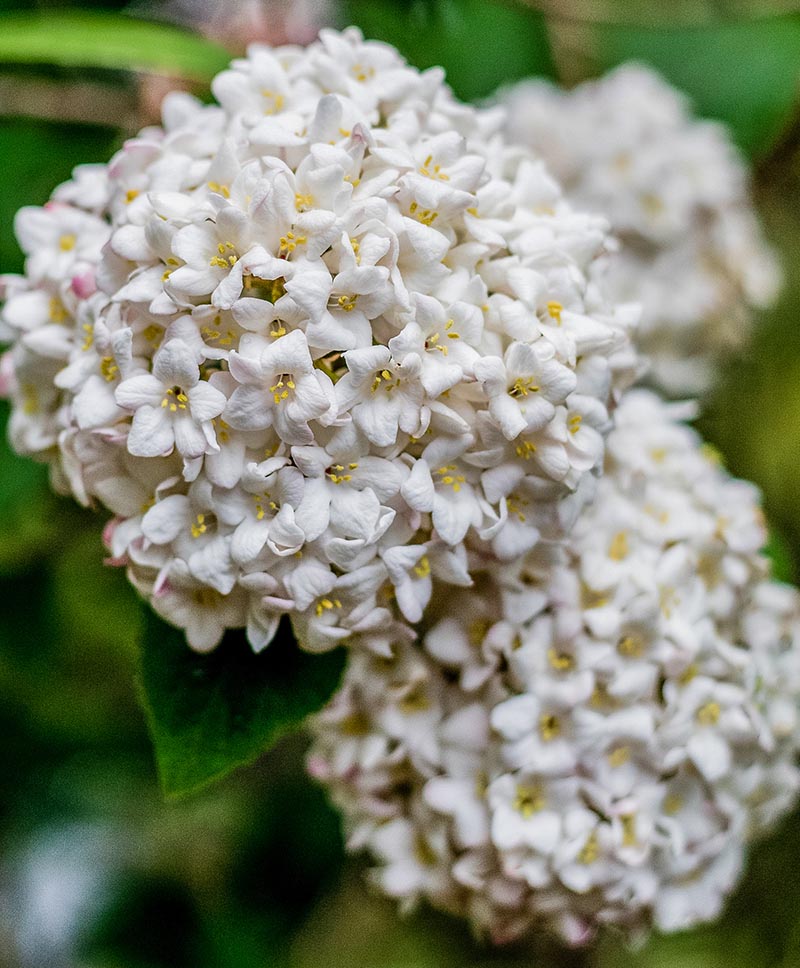
Viburnum burkwoodii
Its showy, fragrant flowers vary in colour from white, cream, pink tinged, or totally pink, and are arranged in panicles, corymbs, or cymes. Different Viburnum species and varieties can flower at various points of the year. Viburnum tinus is a winter flowering species, whilst Viburnum opulus flowers in spring to summer. Some Viburnum species produce berries in a range of colours, such as black, blue, red, or yellow. Most species are dioecious, which means they have separate male or female parts; planting at least two similar Viburnum shrubs can help with cross-pollination and promote fruiting.
Providing pollen, nectar-rich flowers, and berries, Viburnum is an excellent genus of plants for wildlife and biodiversity. In addition, it provides great cover and protection for birds, such as thrushes, robins, and blackbirds. Winter flowering varieties, such as Viburnum tinus, help pollinators during the more difficult months of the year.
Did you know?
Some Viburnum species have been used by archers as shafts for arrows, dating back to the pre-historic era.
Our favourite Viburnum species and varieties
Viburnum davidii
Commonly known as David viburnum, Viburnum davidii is a small, domed, evergreen shrub that grows up to around 1.5m in height. It has dark green, leathery, veined leaves, with clusters of small, white flowers in spring and long-lasting, metallic, blue-black berries on pollinated female plants from summer. This species is great for underplanting taller shrubs, or groundcover at the front of a border.
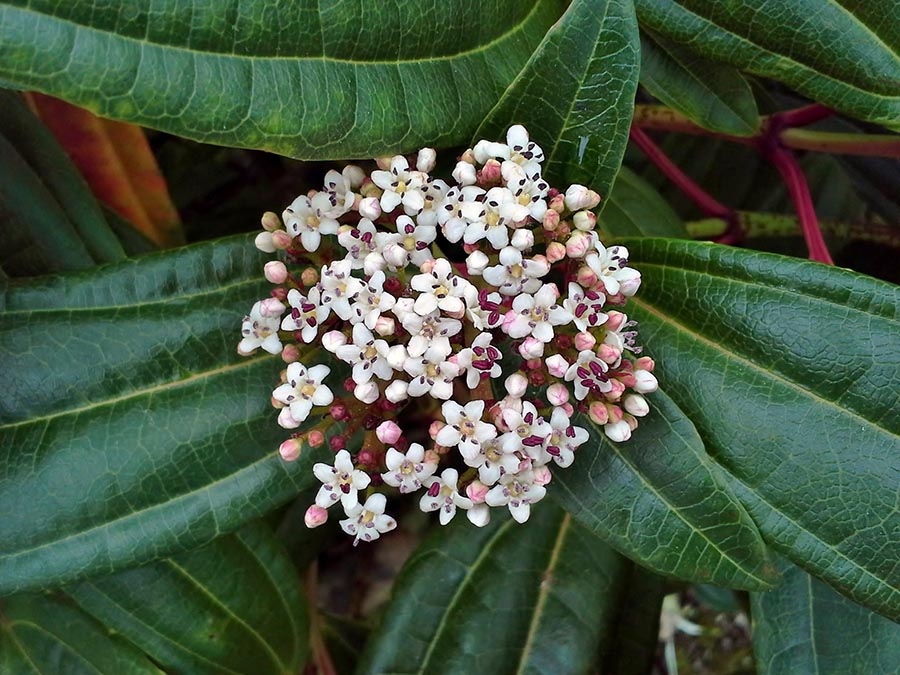
Viburnum lantana
Native to the UK, Viburnum lantana is an upright, deciduous shrub with grey-green serrated leaves. It has heads of small, white, tubular flowers which appear in late spring, followed by red berries which ripen to black over time. Reaching a height of up to 4m, Viburnum lantana is ideal for informal hedges. Its foliage also provides lovely autumn colour as it transitions to a warm red. Great for attracting birds and hoverflies.
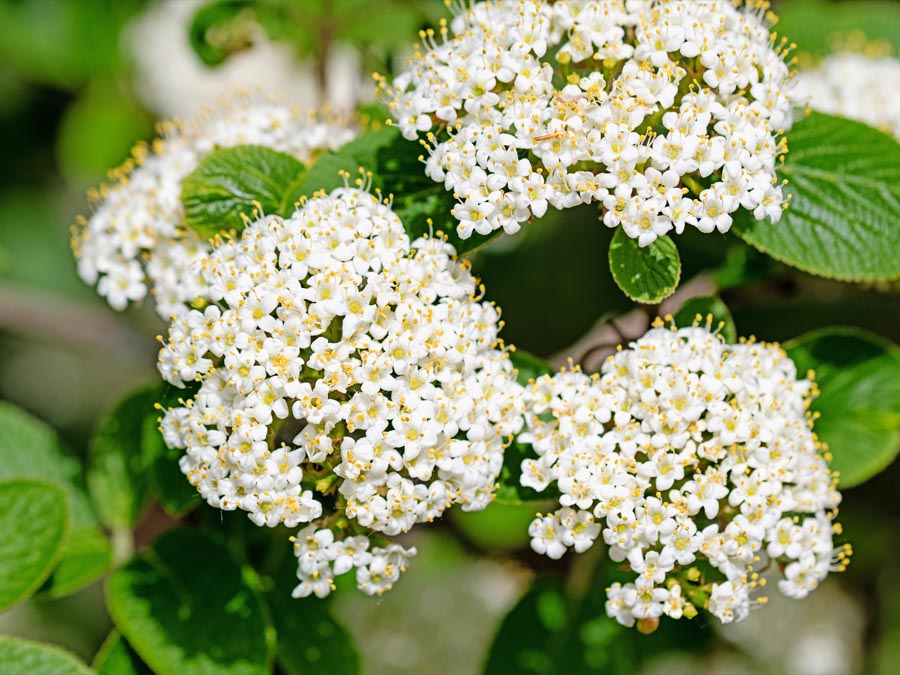
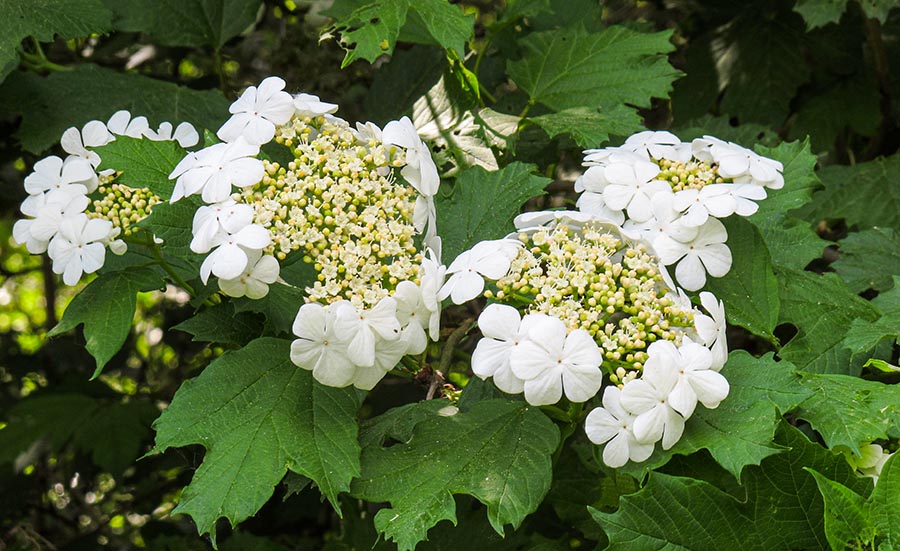
Viburnum opulus
Another UK native Viburnum species, Viburnum opulus is a vigorous, deciduous shrub that grows up to 8m in height, with lobed, maple-like leaves that provide lovely autumn colour. Snowball-like clusters of white, or green tinted flowers appear in late spring and are followed by translucent red berries. Hoverflies are highly attracted to its flowers and its red berries are a useful food source for birds. Viburnum opulus ‘Compactum’ is one of our favourite varieties—a more compact variety with lobed leaves that turn red in autumn, flat heads of fertile flowers, cream-white sterile flowers in early summer, and red berries which follow. This variety is lovely for a woodland setting.
Viburnum tinus
An evergreen species growing up to 3m in height, Viburnum tinus boasts clusters of white flowers which are followed by blue-black berries in spring. Its long flowering period provides good winter interest for shady borders, and Viburnum tinus is useful for both screening and hedging. A couple of our favourite varieties are Viburnum tinus ‘Eve Price’ and Viburnum tinus ‘French White’. Viburnum tinus ‘Eve Price’ is a more compact version, with clusters of pink buds that open into white flowers from winter to spring, followed by blue-black autumn berries. Viburnum tinus ‘French White’ is a vigorous variety with larger leaves, clusters of red buds which open into white flowers, and blue-black berries which follow from autumn. This variety creates a good foil for other flowering plants.
Viburnum × bodnantense ‘Dawn’
Viburnum × bodnantense ‘Dawn’ is a lovely winter flowering variety. It’s a tall, upright, deciduous shrub that grows up to 3m in height, with dark green, ovate leaves. Its clusters of fragrant, pink flowers that appear on bare branches from November to March are highly appreciated by bees and other pollinators. Viburnum × bodnantense ‘Dawn’ is lovely for planting near entrances or walkways as it’s highly scented.
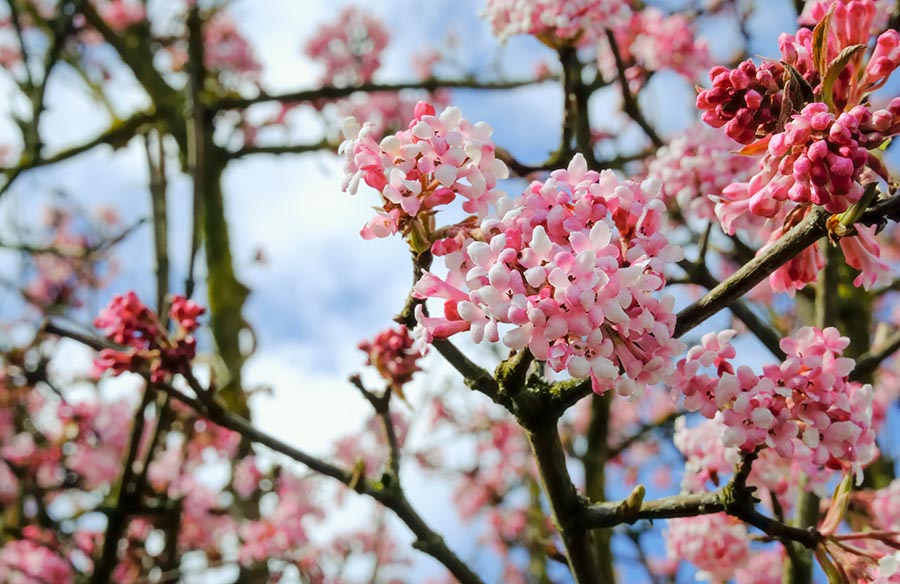
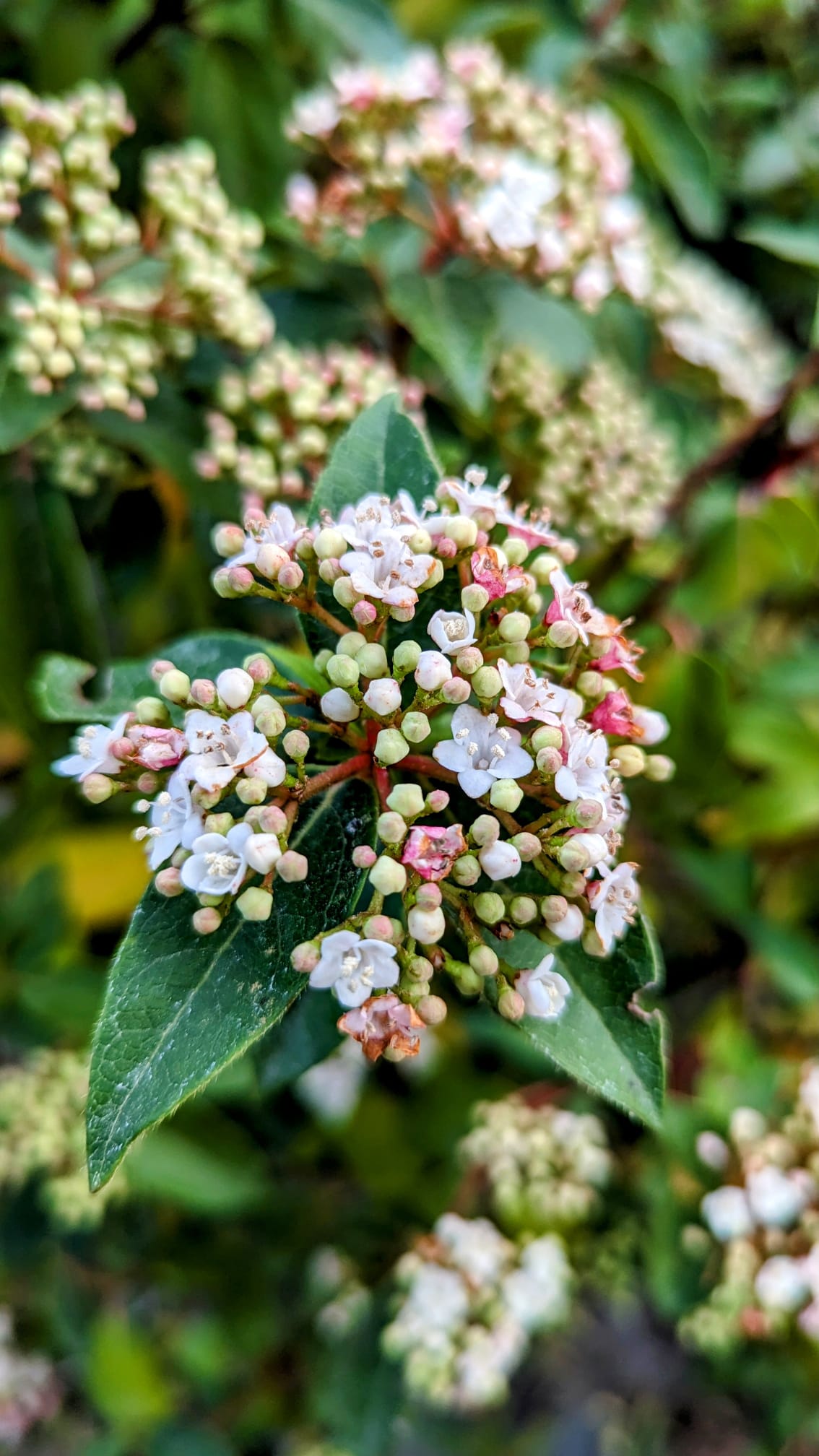
How to grow Viburnum
We recommend planting deciduous Viburnum species from autumn to early spring, ensuring the ground isn’t frozen or overly wet. This provides ample establishment time before the hot, summer weather approaches. When it comes to evergreen Viburnum, these can be planted all year round, but the best establishment results from planting in early spring or autumn.
Viburnum is generally easy going and tolerates many different light levels and types of soil. It’s handy for challenging planting areas, such as heavy shade, or areas that are particularly dry. Moist, but well-drained soil is ideal, but some Viburnum varieties prefer dryer soils; they will struggle to thrive in waterlogged soil. Viburnum prefers a slightly acidic soil, but it can also tolerate alkaline. Its preference for light levels is usually full sun to partial shade, however some varieties such as Viburnum × bodnantense and Viburnum davidii do well in shadier positions.
Once Viburnum has been planted, it will benefit from a layer of biodegradable mulch to help retain moisture. Ensure to leave a mulch-free circle around the plant’s base to prevent the occurrence of rotting.
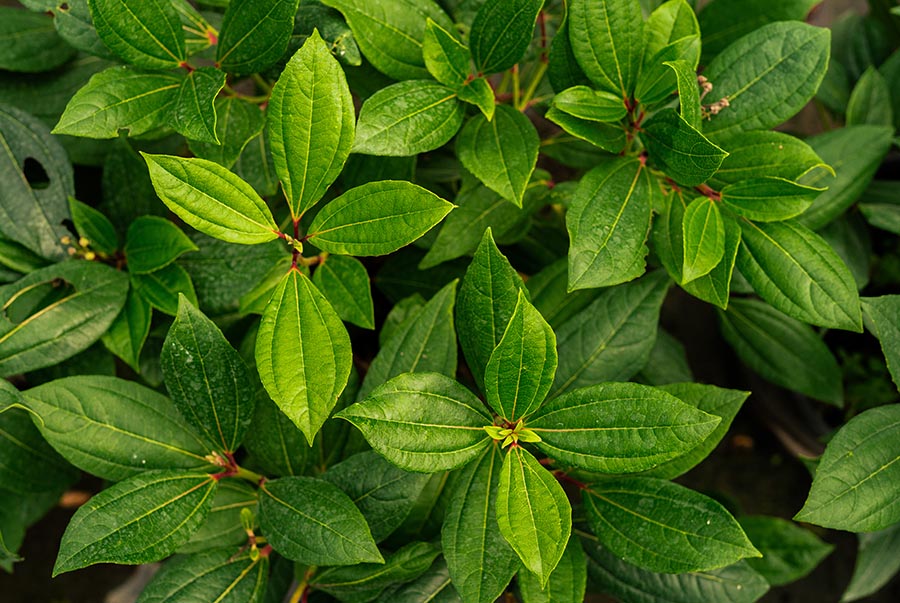
Viburnum davidii
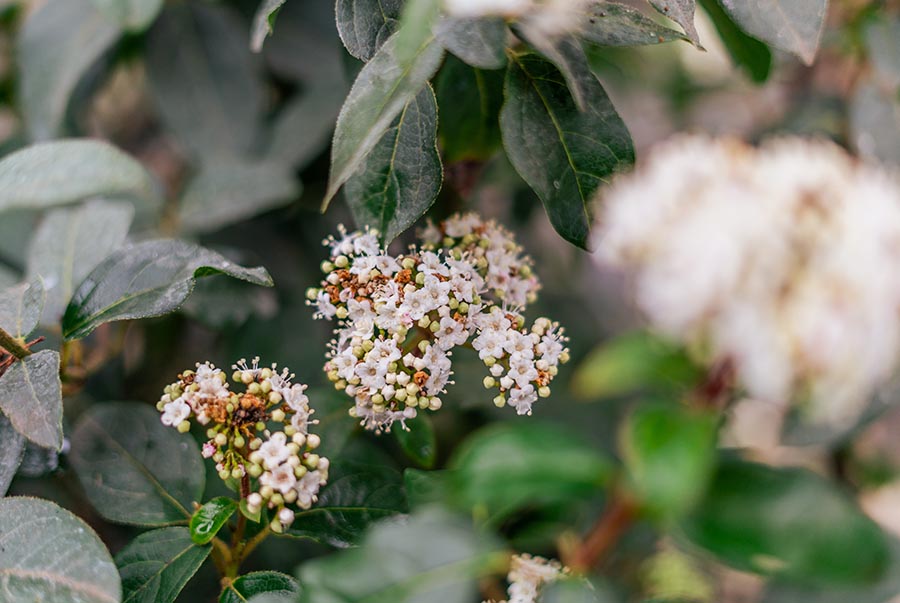
Viburnum tinus
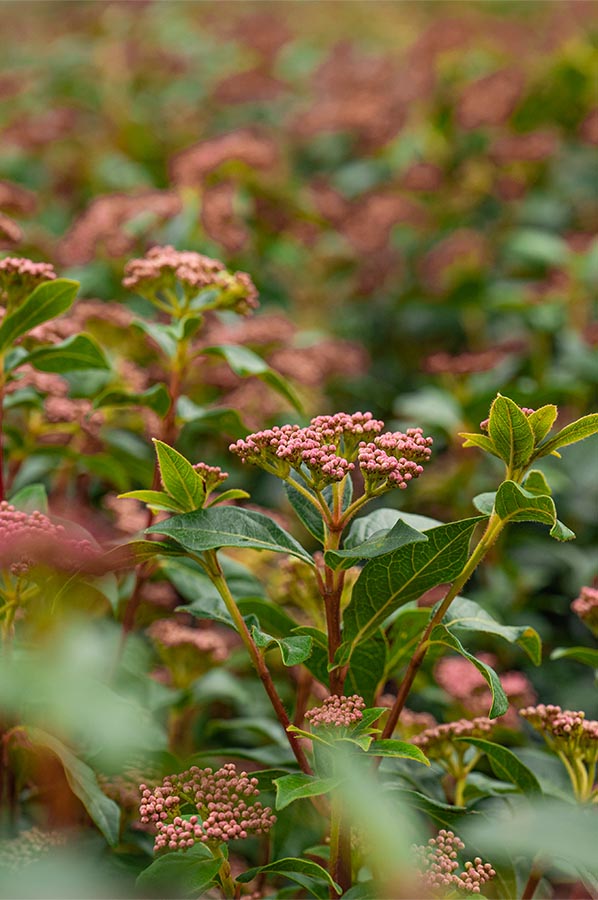
Viburnum tinus ‘Eve Price’
How to care for Viburnum
Minimal pruning is required for Viburnum; we recommend removing any unsightly, dead, or diseased branches if you spot them. Viburnum bloom on the previous year’s wood, so pruning should only be carried out after it has flowered. If leggy shoots develop, these can be trimmed during early summer to help keep its shape. Once a year in spring, a slow release fertiliser can be applied to Viburnum shrubs. Plant feed is not required.
Viburnum should be watered regularly—especially in the first two years after planting, in periods of dry weather. Evergreen species usually do well with drought, so once established, they do not need any additional watering.
Which pests and diseases can Viburnum be affected by?
Honey fungus and fungal leaf spot can affect all Viburnum species. Honey fungus is one of the most destructive fungal diseases in the UK. It spreads underground and attacks the roots of many herbaceous and woody perennials; this eventually leads to decay and the plant roots will die. Signs of honey fungus being present include white fungal growth and occasionally, honey-coloured mushrooms will be visible during the autumn months. Unfortunately, any infected plants and their roots will need to be dug up and destroyed, as there are no effective remedies to treat this harmful fungus.
Fungal leaf spot affects the foliage and young stems of Viburnum shrubs. If a plant becomes infected, spots develop on these areas which gradually increase in size over time. Infected areas turn black and can eventually fall. Fungal leaf spot can be controlled by pruning and removing any infected parts of the plant. Thankfully, fungal leaf spot doesn’t usually cause damage to the health of the plant, but young plants can be weakened if the attack is severe.
Both Viburnum opulus and Viburnum tinus can be affected by a leaf beetle, known as viburnum beetle. Viburnum beetle feeds on Viburnum, and its large numbers of larvae tend to cause the most damage to the plant’s foliage, with adult beetles causing further damage during the summer months. To tackle viburnum beetle, biological control nematodes can be watered onto affected plants. It’s also helpful to promote wildlife within the landscape to help control both the larvae and adult beetles.
Viburnum tinus can also be affected by viburnum whitefly—a species of white-winged, sap sucking flies. The flies are around 1mm in length and are usually spotted on the undersides of leaves during summer. Viburnum whitefly do not tend to affect the plant’s health or vigour; however, they can be controlled by encouraging natural enemies, such as ground beetles, ladybirds, and birds.
If you’d like to find out more about the Viburnum species and varieties which we grow and supply, get in touch with the G Team today.
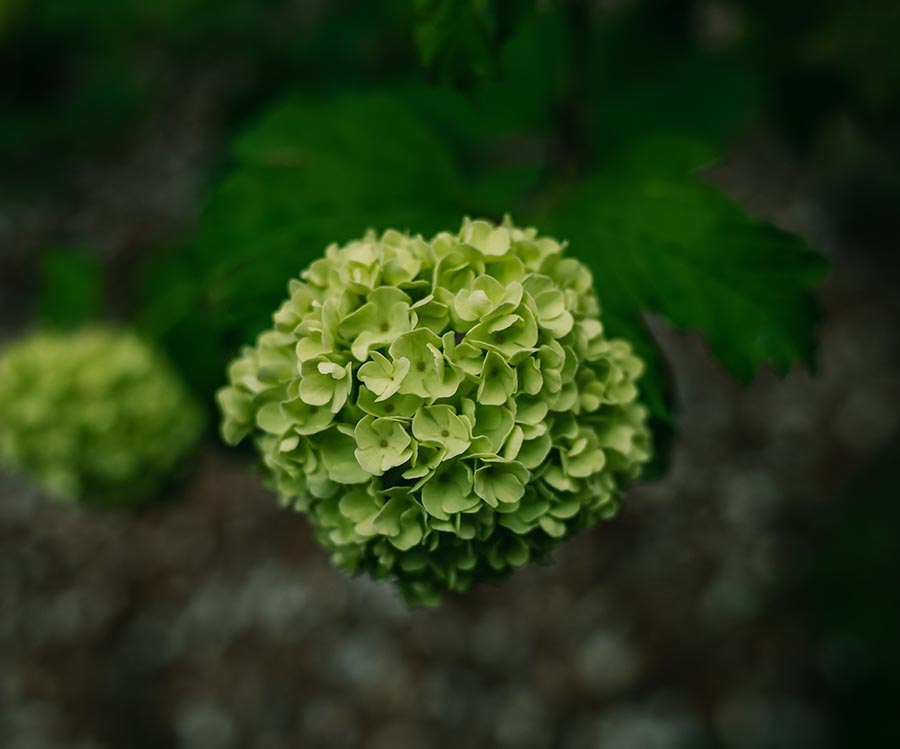
Viburnum opulus ‘Roseum’
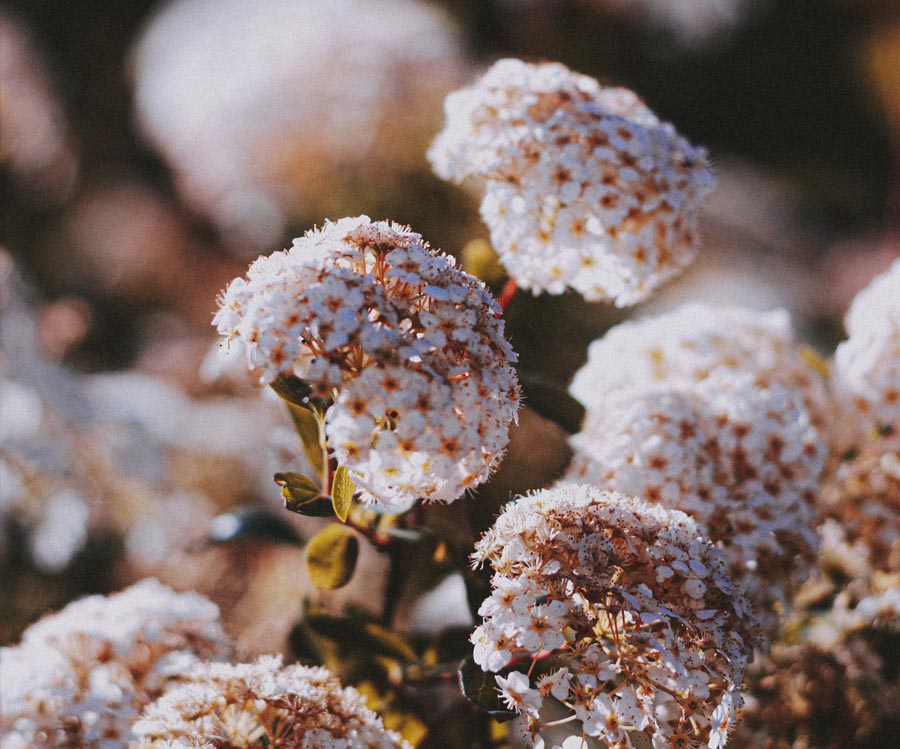
Viburnum carlesii

